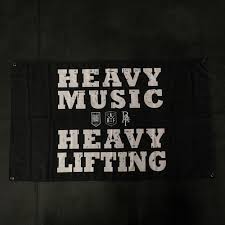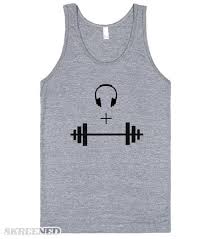Music Helps You Lift Better? Mystery or Truth?
Have you ever wondered if music plays a role in heavy lifting? ould you be more likely to throw around a massive amount of weight to some headbanging screamo or a lovely ballad? My guess for your choice of music while lifting is probably going to be something that has a fast tempo with a good beat and lyrics. Whether it be rock, pop, or hip hop music, (depending on the lifter), there is science behind the effects of the tempo of a song versus the genre.
“Researchers at Brunel University (London, England) found that faster tempo tunes and higher intensity of music before performance affects certain brain structures that may enhance the athlete's visual perception, attention, and motor control during reactive performance.” says Greg Chertok, M.Ed., CC-AASP, and a sport psychology consultant with Telos Sport Psychology Coaching.1 In other words, the short bursts of high tempo songs can increase reaction time and muscle contraction. The same pertains to motivational music as well, while the reaction tends to remain mostly the same with different effects, depending on the individual.
Another study tested the effects of music while lifting while physically exerting the body. In the study, they found that athlete’s muscles were using less energy and becoming more physically effective. "Music is like a legal drug for athletes," Costas Karageorghis of London's Brunel University School of Sport and Education told Ace Fitness. "It can reduce the perception of effort significantly and increase endurance by as much as 15 percent." Karageorghis lists three properties of music that influence exercise performance including an athlete's tendency to move in tempo with synchronous sounds, music's ability to increase a desire to move rather than sit, and music's distracting effect from workout-related pain.2
Believers in music and the physical abilities of the athlete should research this science which proves the effects music has on the mind and the physical capabilities of the human body. My musical preference includes screaming at the top of their lungs rock. , Something about this genre of music pushes my mind and body to lift an amount of weight I didn’t think I could. Music is a magical thing when putting the body under the stresses of lifting, it helps the athlete to forget about the physical demands,improves focus on the sounds, and solos. What music makes you push yourself in the weightroom?
References:
1Can Music Help you Lift More Weight? (n.d.). Retrieved February 22, 2016, from http://www.muscleandfitness.com/workouts/workout-tips/can-music-help-you-lift-more-weight
2Music Reduces Perceived Physical Exertion While Exercising: Is Your Playlist Impacting Your Workout? (2013). Retrieved February 22, 2016, from http://www.medicaldaily.com/music-reduces-perceived-physical-exertion-while-exercising-your-playlist-impacting-your-workout




